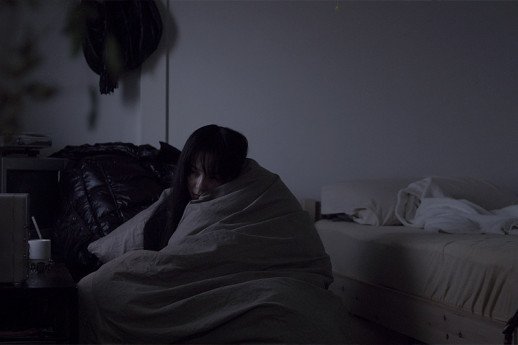TIFF 2013: A Change of Course?

Among film critics that cover the festival circuit, the general consensus is that recent installments of the Tokyo International Film Festival haven’t lived up to their potential. By nature, critics channel for different audiences, and over the past five years TIFF has abandoned some significant festival demographics. For example, curated retrospectives of master directors—a mainstay of the big international festivals and well-received by cinéphiles—have almost entirely disappeared from TIFF. Formerly, the festival invited high-profile critics Shigehiko Hasumi and Sadao Yamane to chair the Nippon Cinema Classics series (1995-2008), including retrospectives of Shohei Imamura, Kon Ichikawa, and Kyoko Kagawa. Recent years, however, no longer include these programs. Similarly, while TIFF made a bid for a slice of the anime audience by introducing the Animecs program in 2006, this was dropped for 2009, and by last year there were no new animated features in the entire festival.
More industry-minded observers have been similarly underwhelmed. With the Berlinale unspooling new goodies in February, Cannes in May, Venice in August, Toronto in September, and Busan in early October, the mid-October slot for Tokyo is hardly propitious. While the affiliated TIFFCOM content market continues to expand for TV and anime, the 2013 edition of TIFF was restructured for fewer film titles overall (down to 95 from an average of 133 films between 2006 and 2012 — details below).
Still, with the appointment of Yasushi Shiina of Kadokawa Shoten as the festival’s new Director General, and with a renewed commitment to independent cinema and anime, there are reasons to believe that TIFF may now be changing course. Shiina came on board in March of this year, and while the effects of his direction won’t really be visible until at least next year, we can begin to assess a few immediate changes in the festival line-up.
For 2013, the Competition and Special Screenings sections remained essentially the same in scope and mission. The theme of this year’s competition was “resistance”. In the words of programming director Yoshi Yatabe: “Women who support people resisting political regimes, a family that attempts a hopeless resistance against an autocratic state, and young people who resist the values of the older generation.” In the spirit of the latter, the Tokyo Sakura Grand Prix was awarded to Lukas Moodysson’s We Are the Best!, a comedy about three adolescent girls forming a punk band in early-80s Stockholm. The Special Jury Prize went to Behnam Behzadi’s Bending the Rules, while Red Family, Lee Ju-hyoung’s satire of political conflict on the Korean peninsula, received the Audience Award. With the departure of sponsor Toyota, the eco-themed Natural TIFF program was discontinued for 2013. Although highly visible, this was not in fact a significant change to the festival line-up. Launched in 2008 with twenty-seven films and much “green” fanfare, the Natural TIFF program was then quickly whittled down to around nine films per year. Ironically, this program emphasizing “sustainability” was canned after Toyota’s profits suffered a post-Lehman fender-bender.
Under Shiina’s direction, the Japanese Eyes section has been re-branded as “Japanese Cinema Splash”. The scale and emphasis of this program — international promotion of Japanese independent films — remain the same. Likewise, the Winds of Asia program has been renamed “Asian Future”, though here the changes are more significant. Originally named “Cinema Prism” in 2002, this section averaged over thirty films per year until being reduced to just eight for 2013. In view of this reduction, the programmers are now re-purposing the Asian Future section as a kind of “second competition”. Yet, since its predecessor, Winds of Asia, was already juried and had its own section award, this change speaks more to an overall narrowing of festival focus on emerging Asian directors.

This year’s Best Asian Future Award went to Yang Huilong’s Today and Tomorrow. Set in the outskirts of Beijing, it offers a snapshot of three members of the so-called “ant tribe”, a generation of unemployed youth with subprime college degrees, cast-offs in the expansion of the Chinese economy. The animating question of the film concerns whether they should hang onto their dreams of success, or whether it is only making them more miserable. Other noteworthy films in this program were Rekorder, which follows an aging movie pirate through the backstreets of Manila, and Rigor Mortis, a contemporary and CGFX-intensive reworking of the classic Hong Kong horror series Mr. Vampire. While the three aforementioned films did not disappoint, the standout entry in the Asian Future section was Tetsuichiro Tsuta’s The Tale of Iya. Set in the mountains of Tokushima, one of the remaining untouched regions of Shikoku, this startlingly evocative film charts the crossing of a young man from Tokyo (Shima Onishi) seeking personal renewal deep in the countryside, with a young foundling (Rina Takeda) who follows the opposite trajectory. With subterranean echoes of Himatsuri and Daichi no komoriuta, Tsuta’s film shows a deeply moving quest for meaning and home across the Japanese archipelago.
A number of films chosen for this year’s festival were seemingly twinned. Both Richard Ayoade’s thriller The Double and Mari Asato’s heavy-handed J-horror dollop Bilocation take up the theme of the doppelgänger, the former in a more visually imaginative and literary-classical mode. Both Koji Fukada’s Au revoir l’été and Rikiya Imaizumi’s Sad Tea offer meditations on relationships and monogamy, façon Rohmer, though the latter with greater polish, humor, and stylistic verve. Finally, both Naoto Kumazawa’s Jinx!!! and Takehiko Shinjo’s Beyond the Memories explore themes of lost love and adolescent grieving familiar from shōjo manga. The last two films are quite conventional, innocent, and sentimental idol-based vehicles, apparently for domestic, fan-based audiences. Best Picture Award in the Japanese Cinema Splash section went to Ayumi Sakamoto’s Forma. Though thematically unremarkable, Forma uses clever, almost clinical narration to assemble and disassemble its characters before our eyes. If Hisashi Saito’s There’s Nothing to be Afraid of delivers the quotidian minutiae of a couple’s life with excruciating, Ozu-on-quaaludes slowness, Hideo Sakaki’s Disregarded People, an apparently literal adaptation of a George Akiyama manga, offers another couple’s life in an even more unbearable form, in this case something pretty close to rape-fantasy pornography.
Although TIFF retrenched for 2013 with fewer titles overall, a slightly greater proportion (38%) were Japanese films. Under Shiina’s direction, this would seem to reflect an increased emphasis on showcasing domestic productions for foreign buyers and festival programmers. Although this is the stated aim of the new Japanese Cinema Splash section, it is worth noting that seemingly half of the entries in this section have yet to secure domestic distribution, and given the current state of Japanese film, it is extremely unlikely that any of these could find foreign distribution first. On this point, some numbers may help to bring the bigger picture into focus. Between 2007 and 2012, TIFF has screened 90 new Japanese films. Of these, 65% have found domestic distribution, 61% have been screened at international film festivals, but only 15% (14 films) have been released in theaters outside of Japan, and only 5% have been released on DVD, BluRay, or VOD abroad. Between 2007 and 2012, the top destinations for distribution outside of Japan have been Taiwan (six films), Hong Kong (four), Singapore and France (two each). In this period, the only film to screen at TIFF and subsequently find theatrical distribution in the US was Kōji Wakamatsu’s United Red Army (2007). Given this overall picture, and given the extremely narrow appeal of a number of the selections for this year’s program, it is difficult to see how the present crop of films are going to make a “splash” overseas.

One other change to this year’s TIFF worth noting is that the World Cinema section—showcasing new, “internationally acclaimed” films by established directors which have not yet been released in Japan—has been renamed “World Focus”. Conspicuously, World Focus is the only program that has been enlarged for 2013. This would seem to dovetail with Shiina’s vision of TIFF as a film festival “that brings to Tokyo high-quality, world-class films that everyone can enjoy.” The two key words here are “brings” and “everyone”. Thus, as we sift through the various changes for 2013, it seems clear that the new “films-first” TIFF remains largely geared to serve the domestic distribution business, by stimulating interest in established foreign works, and providing advance marketing for incoming top-drawer Hollywood fare such as Captain Phillips. This strategy will probably be good for the large distributors, though whether staying this course will help raise the profile of Japanese cinema abroad is another question. It was perhaps fitting that PM Shinzo Abe made an appearance at the festival’s opening ceremony, to express his “hope” that the Japanese content industry will be “at the core of the economic rise”, for just as Abenomics trades on a hope for economic prosperity without actually increasing wages, so too the current vision for TIFF seems to trade on the hope that Japanese films make a splash in overseas markets, without actually investing in them.

Selected films, coming up: How Selfish I Am! (Jibun no koto bakaride nasakenaku naru yo) and There’s Nothing to Be Afraid of (Nani mo kowai koto wa nai) opened on November 16th are currently screening at Eurospace in Shibuya. The Tale of Iya (Iya Monogatari Oku no hito), Jodorowsky’s Dune (Hodorofusukii no DUNE), Au revoir l’été (Hotori no Sakuko), The Railway Man (Reiruuei [レイルウェイ Unmei no tabiji), and Disregarded People (Sute gataki hitobito) will open in Tokyo theaters in early 2014.
M. Downing Roberts
M. Downing Roberts



